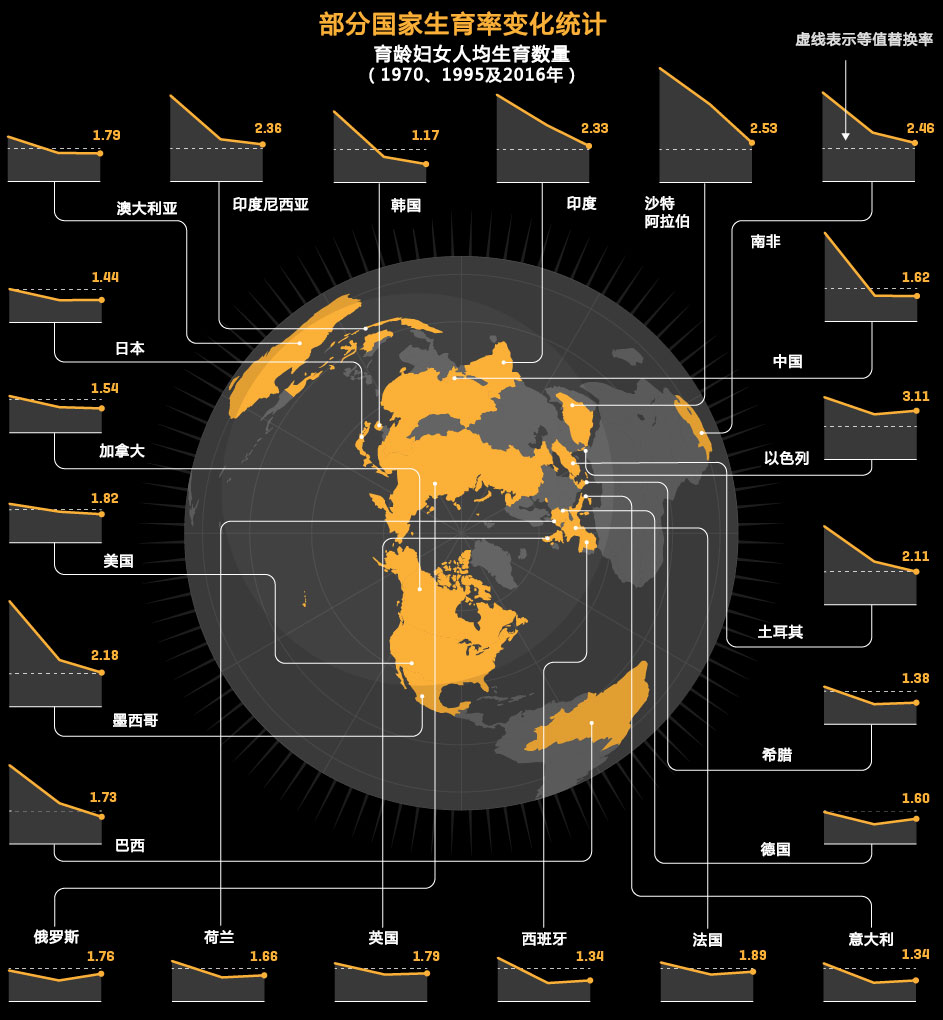
|
在大多數(shù)工業(yè)國(guó)家,平均每個(gè)婦女生育孩子的數(shù)量已降至2.1以下,,這一數(shù)字是保障人口增長(zhǎng)平穩(wěn)的“更替率”,。對(duì)于資源緊張的地球來說,這或許是件好事,。但對(duì)企業(yè)和政府來說,,這是一個(gè)迫在眉睫的挑戰(zhàn)。生育率下降的一大影響是上班人口與退休人口比例的下降,,這已經(jīng)開始侵蝕美國(guó),、歐洲和日本的社會(huì)保障體系。生育率的下降也威脅著那些依靠不斷擴(kuò)大客戶群來實(shí)現(xiàn)增長(zhǎng)的面向消費(fèi)者的行業(yè),。為了解決這個(gè)問題,,我們需要加快發(fā)展生產(chǎn)力,以及制定更好的移民政策,。這些解決辦法很重要,,不是兒戲。(財(cái)富中文網(wǎng)) |
In most industrial nations, the average number of childbirths per woman has fallen below 2.1—the “replacement rate” at which population growth ?levels off. That may be good for a resource-strained planet. But for businesses and governments, it’s a looming challenge. One impact of declining fertility—a sinking ratio of working-age people to retiree—is already eroding social safety nets in the U.S., Europe, and Japan. Falling birth rates also threaten consumer-facing industries whose growth depends on ever-expanding pools of customers. To address the problem, we’ll need big gains in productivity and better immigration policy. Those solutions are anything but child’s play. |




